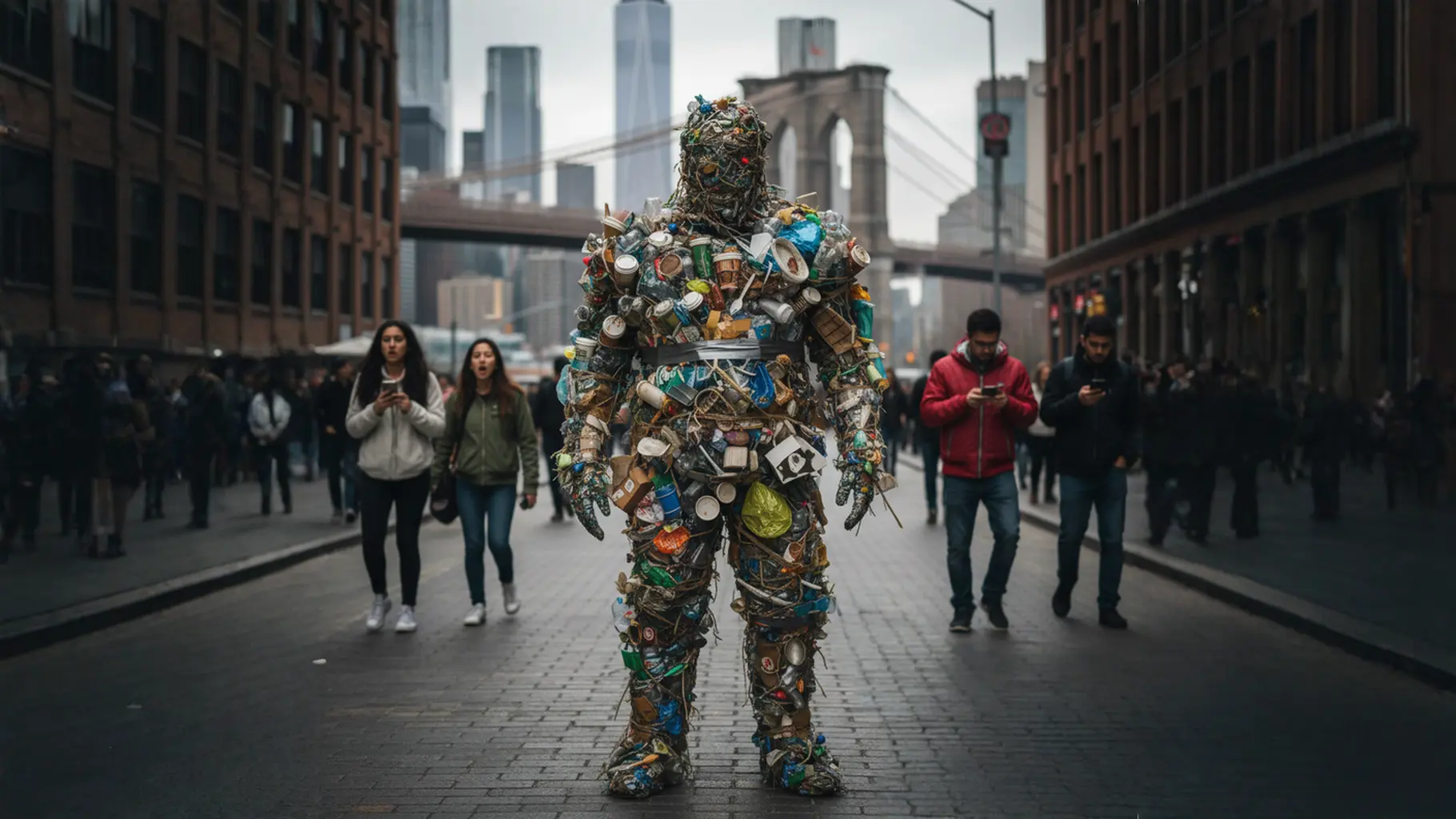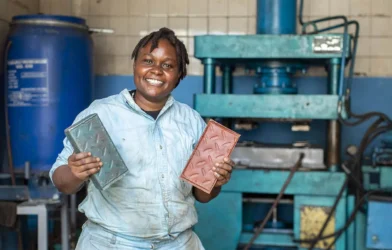Author: Aarya Shah | EQMint
New York, October 04, 2025 — What if every piece of trash you generated in a month stayed strapped to your body—visible, tangible, and impossible to ignore? That’s the premise of a powerful experiment highlighting the staggering volume of waste created by the “average lifestyle,” and why waste reduction must become a priority for individuals and communities alike.
By wearing their daily trash instead of throwing it into a bin or having it whisked away by collection trucks, participants in the experiment offered a striking visual: the body buried beneath the weight of its own habits. The result is a sobering reminder of the scale of waste that one person generates in just 30 days.
A Month of Trash, Worn Like a Suit
The experiment demonstrated a simple truth: even ordinary living creates mountains of waste. From coffee cups to food wrappers and plastic bags, every small item accumulates until it becomes a crushing burden.
Individually, a paper cup or a plastic wrapper may feel insignificant. But seen together, strapped to a single person, they paint a “heavy picture” of modern life. The experiment’s shock value lies in its ordinariness—this is not excessive consumption, but simply what one individual produces by eating, shopping, and consuming as usual.
Multiplying the Problem by Billions
Waste is not just a personal issue; it’s a global crisis. If one person generates this much trash in a single month, multiplying that by billions of people worldwide reveals why waste reduction & management is one of the most pressing environmental challenges of our time.
Plastic pollution in oceans, overflowing landfills, and rising greenhouse gas emissions from waste decomposition are all symptoms of an unsustainable model of consumption. The experiment’s imagery forces viewers to confront the uncomfortable truth: our systems are designed for disposability, not durability.
Out of Sight, Out of Mind
Part of the problem lies in invisibility. Once trash is thrown away, it leaves our sight and, too often, our minds. Collection trucks haul it to landfills, incinerators, or recycling centers, removing the immediate reminder of what we use and discard.
But the “trash suit” experiment flips that script, making waste impossible to ignore. It raises a critical question: if our waste stayed with us—visible and unavoidable—would we rethink our choices?
Beyond Recycling: Rethinking Consumption
The project is not about guilt, but awareness. It emphasizes that waste reduction is not just about recycling more; it’s about rethinking consumption at its root.
This involves designing smarter systems that minimize single-use materials, encouraging businesses to adopt circular economy models, and inspiring consumers to make sustainable choices in their daily lives.
Some strategies include:
- Carrying reusable coffee cups, bottles, and bags.
- Choosing products with minimal or compostable packaging.
- Supporting companies that prioritize eco-friendly design.
- Waste reduction of food through better planning and storage.
Small Actions, Big Change
The experiment underscores a key principle: small actions scale. When multiplied by millions of people, seemingly minor decisions—like saying no to a plastic straw or bringing your own grocery bag—add up to significant environmental impact and waste reduction.
Awareness is the first step toward change. By visualizing waste as something that clings to us rather than disappears, individuals are prompted to ask: What’s one change I could make this week to cut down my invisible trash suit?
A Call to Action
The campaign also highlights the role of community and collaboration. Environmental advocates such as Betty Leviner, Hanh Ngo, Rafe Whysall, Mike Mueller, Thierry Adolphe, and Wesley Fong Chong have amplified the message, urging individuals and organizations alike to think critically about consumption habits.
The underlying message is clear: while the waste problem is massive, it is not insurmountable. Every small shift—from consumers, businesses, and policymakers—contributes to lightening the global load of waste reduction.
Conclusion: Waste Reduction
The “heavy picture of everyday life” is more than a striking visual—it’s a wake-up call. Waste doesn’t vanish when it leaves our homes. It lingers in landfills, pollutes oceans, and clogs ecosystems.
But by rethinking the way we consume, reducing unnecessary disposables, and embracing sustainable alternatives, we can begin to shed the invisible trash suit that weighs us down.
As the campaign reminds us: big change starts with small actions. The question now is—what will you do this week to make your load a little lighter?
To watch the complete video visit LinkedIn
Disclaimer: This article is based on information available from public sources. It has not been reported by EQMint journalists. EQMint has compiled and presented the content for informational purposes only and does not guarantee its accuracy or completeness. Readers are advised to verify details independently before relying on them.





